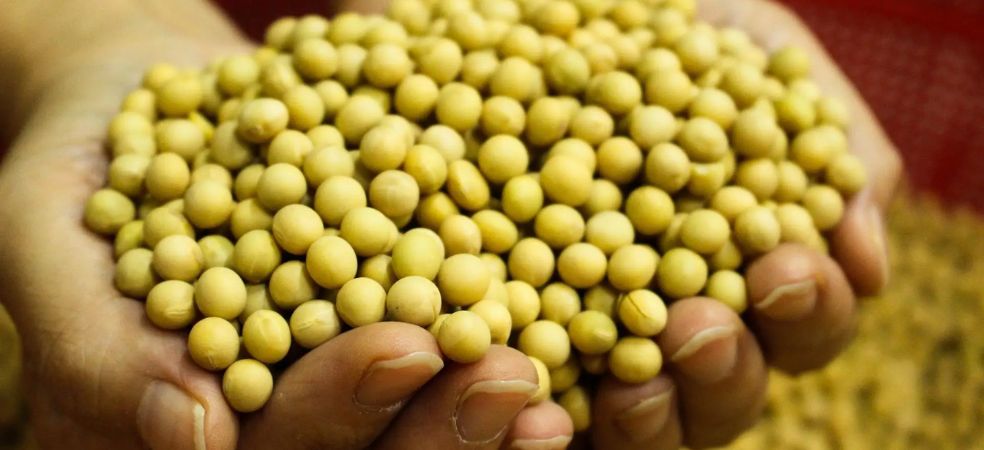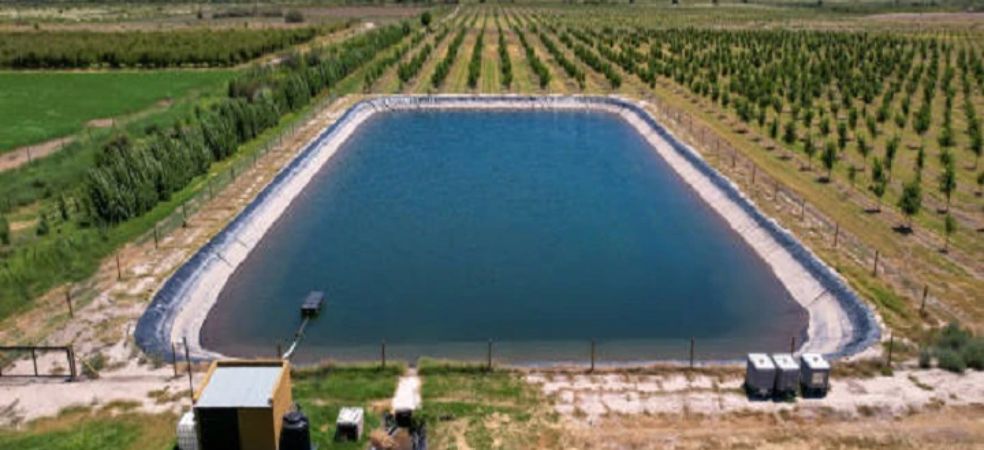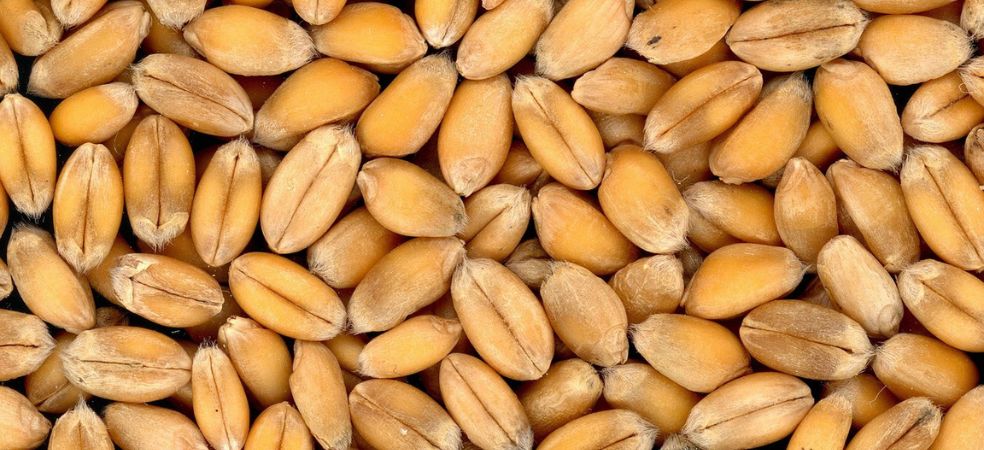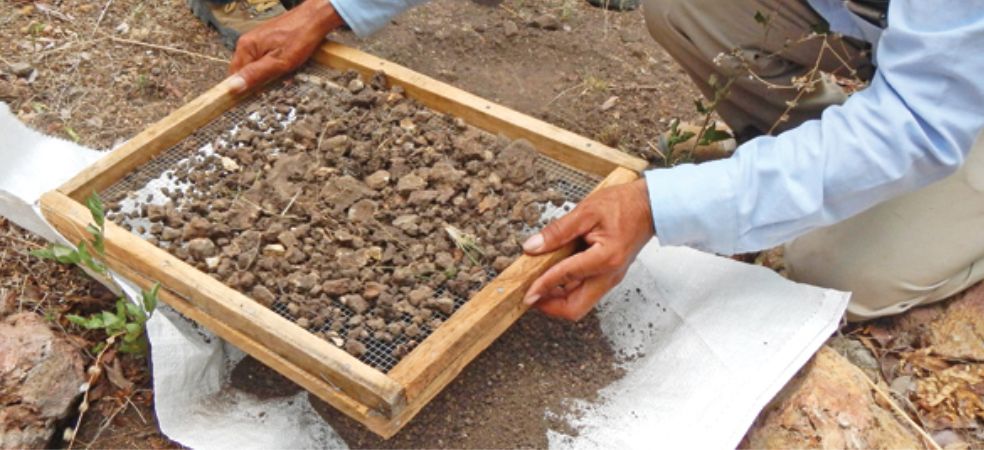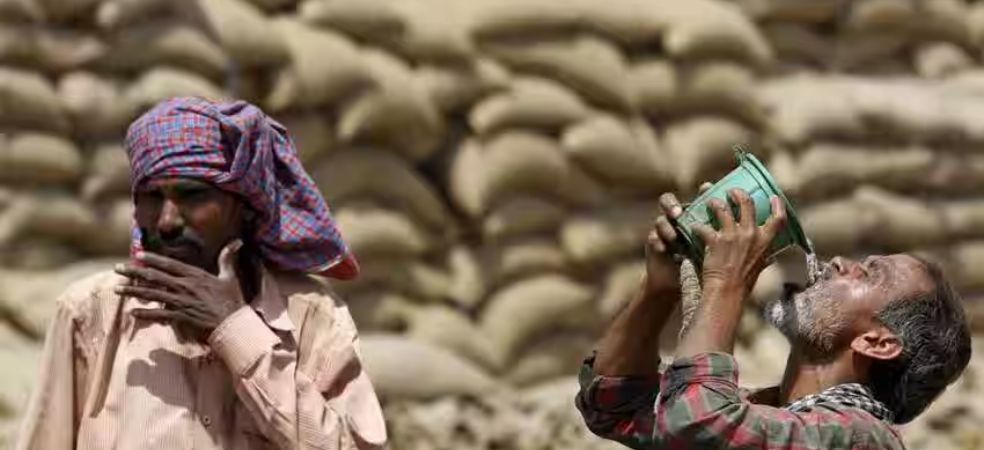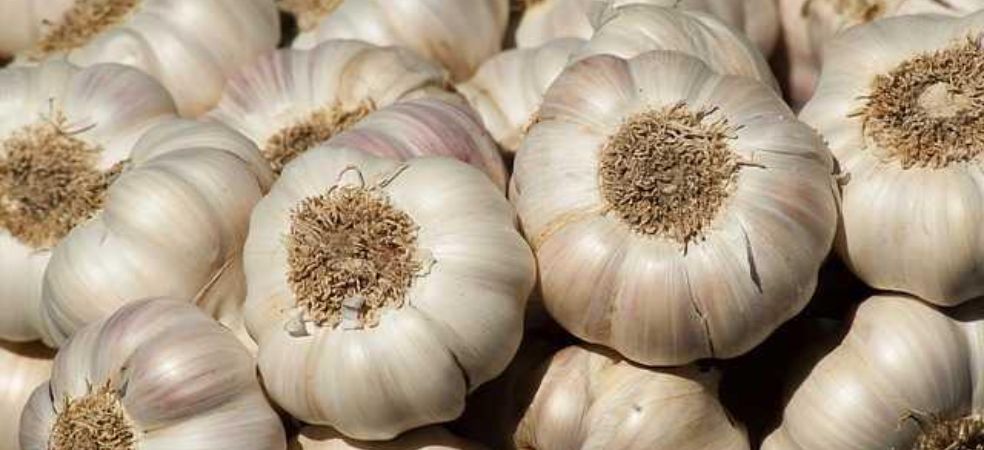What is the price of wheat in different mandis of Madhya Pradesh. Let’s see the complete list.
| Rates of Wheat in the mandis of MP |
| District |
Market |
Variety |
Minimum Price (per quintal) |
Maximum Price (per quintal) |
| Ratlam |
Alot |
Mill Quality |
2326 |
2457 |
| Ratlam |
Alot |
Wheat |
2274 |
2480 |
| Shajapur |
Agar |
Mill Quality |
2406 |
2436 |
| Shajapur |
Agar |
Wheat |
1940 |
2806 |
| Panna |
Ajaygarh |
Mill Quality |
2500 |
2515 |
| Alirajpur |
Alirajpur |
Wheat |
2400 |
2500 |
| Alirajpur |
Alirajpur |
Wheat |
2500 |
2500 |
| Chhindwara |
Amarwda |
Mill Quality |
2450 |
2450 |
| Chhindwara |
Amarwda |
Wheat |
2388 |
2480 |
| Badwani |
Anjad |
Lokwan |
2525 |
2550 |
| Anupur |
Anuppur |
Wheat |
2400 |
2400 |
| Ashoknagar |
Ashoknagar |
Mill Quality |
2100 |
3370 |
| Ashoknagar |
Ashoknagar |
Other |
2450 |
2650 |
| Ashoknagar |
Ashoknagar |
PISSI |
3100 |
3100 |
| Ashoknagar |
Ashoknagar |
Sharbati |
3505 |
3505 |
| Ashoknagar |
Ashoknagar |
Sujata |
2775 |
3570 |
| Ashoknagar |
Ashoknagar |
Wheat |
2105 |
3895 |
| Ashoknagar |
Ashoknagar |
Wheat |
2110 |
2531 |
| Sehore |
Ashta |
Lokwan |
2366 |
2552 |
| Sehore |
Ashta |
Sharbati |
3502 |
3502 |
| Sehore |
Ashta |
Wheat |
2350 |
4125 |
| Hoshangabad |
Babai |
Mill Quality |
2410 |
2410 |
| Chhatarpur |
Badamalhera |
Mill Quality |
2300 |
2610 |
| Chhatarpur |
Badamalhera |
Mill Quality |
2410 |
2500 |
| Chhatarpur |
Badamalhera |
Wheat |
2438 |
2520 |
| Chhatarpur |
Badamalhera |
Wheat Mix |
2450 |
2450 |
| Shivpuri |
Badarwas |
Wheat |
2290 |
2600 |
| Ujjain |
Badnagar |
Lokwan |
2436 |
2591 |
| Ujjain |
Badnagar |
Mill Quality |
2291 |
2471 |
| Ujjain |
Badnagar |
Wheat |
1801 |
2990 |
| Ujjain |
Badnagar |
Wheat Mix |
2310 |
2380 |
| Dhar |
Badnawar |
Lokwan |
1800 |
3920 |
| Dhar |
Badnawar |
Mill Quality |
2200 |
2600 |
| Dhar |
Badnawar |
Wheat |
2190 |
3040 |
| Dhar |
Badnawar |
Wheat-Organic |
2430 |
2430 |
| Shajapur |
Badod |
Wheat |
2050 |
2618 |
| Shajapur |
Badod |
Wheat |
2176 |
2621 |
| Khargone |
Badwaha |
Wheat |
1851 |
2592 |
| Khargone |
Badwaha |
Wheat |
2400 |
2775 |
| Badwani |
Badwani |
Lokwan |
2605 |
2605 |
| Dewas |
Bagli |
Mill Quality |
2448 |
2450 |
| Rewa |
Baikunthpur |
Mill Quality |
2460 |
2515 |
| Rewa |
Baikunthpur |
Wheat |
2450 |
2560 |
| Chhatarpur |
Bakswaha |
Mill Quality |
2550 |
2550 |
| Badwani |
Balwadi |
Other |
2600 |
2600 |
| Sagar |
Bamora |
Mill Quality |
2500 |
2500 |
| Sagar |
Bamora |
Wheat |
2300 |
2300 |
| Hoshangabad |
Banapura |
Local |
2436 |
2579 |
| Hoshangabad |
Banapura |
Wheat |
2450 |
2475 |
| Sagar |
Banda |
Wheat |
2300 |
2500 |
| Hoshangabad |
Bankhedi |
Mill Quality |
2451 |
2473 |
| Raisen |
Bareli |
Wheat |
1911 |
2480 |
| Seoni |
Barghat |
Wheat |
2430 |
2435 |
| Raisen |
Begamganj |
Mill Quality |
2430 |
2450 |
| Raisen |
Begamganj |
Wheat |
2200 |
2850 |
| Shehdol |
Beohari |
Mill Quality |
2430 |
2430 |
| Bhopal |
Berasia |
Local |
2330 |
2460 |
| Bhopal |
Berasia |
Lokwan |
2503 |
2626 |
| Bhopal |
Berasia |
Mill Quality |
1800 |
2739 |
| Bhopal |
Berasia |
PISSI |
2321 |
2321 |
| Bhopal |
Berasia |
Sharbati |
2311 |
2468 |
| Bhopal |
Berasia |
Wheat |
2125 |
2750 |
| Bhopal |
Berasia |
Wheat Mix |
2400 |
2400 |
| Betul |
Betul |
Mill Quality |
2425 |
2500 |
| Datia |
Bhander |
Mill Quality |
2400 |
2450 |
| Mandsaur |
Bhanpura |
Mill Quality |
2300 |
2435 |
| Betul |
Bhensdehi |
Local |
2470 |
2470 |
| Betul |
Bhensdehi |
Mill Quality |
2470 |
2470 |
| Khargone |
Bhikangaon |
Mill Quality |
2400 |
2475 |
| Khargone |
Bhikangaon |
Wheat |
2001 |
3005 |
| Khargone |
Bhikangaon |
Wheat |
2444 |
2610 |
| Bhind |
Bhind |
Wheat |
2537 |
2537 |
| Gwalior |
Bhitarwar |
Mill Quality |
2345 |
2530 |
| Bhopal |
Bhopal |
Lokwan |
2660 |
2660 |
| Bhopal |
Bhopal |
Malwa Shakti |
2428 |
2428 |
| Bhopal |
Bhopal |
Sharbati |
3100 |
3891 |
| Bhopal |
Bhopal |
Wheat |
2342 |
2801 |
| Bhopal |
Bhopal |
Wheat |
2325 |
2480 |
| Rajgarh |
Biaora |
Mill Quality |
2400 |
2400 |
| Rajgarh |
Biaora |
Wheat |
2105 |
2530 |
| Rajgarh |
Biaora |
Wheat |
2200 |
2470 |
| Mandla |
Bichhiya |
Wheat |
2400 |
2600 |
| Chhatarpur |
Bijawar |
Mill Quality |
2400 |
2540 |
| Chhatarpur |
Bijawar |
Wheat |
2225 |
2500 |
| Sagar |
Bina |
Mill Quality |
2700 |
2700 |
| Sagar |
Bina |
Sharbati |
2755 |
3320 |
| Sagar |
Bina |
Wheat |
1901 |
3480 |
| Sagar |
Bina |
Wheat |
2300 |
2700 |
| Guna |
Binaganj |
Wheat |
2030 |
2445 |
| Guna |
Binaganj |
Wheat |
2180 |
2400 |
| Burhanpur |
Burhanpur |
Wheat |
2350 |
2749 |
| Burhanpur |
Burhanpur |
Wheat |
2625 |
2625 |
| Rewa |
Chaakghat |
Mill Quality |
2470 |
2600 |
| Ashoknagar |
Chanderi |
Wheat |
2000 |
2421 |
| Chhindwara |
Chaurai |
Mill Quality |
2450 |
2557 |
| Chhindwara |
Chaurai |
Mill Quality |
2375 |
2529 |
| Chhindwara |
Chaurai |
Wheat |
2311 |
2571 |
| Chhindwara |
Chaurai |
Wheat Mix |
2515 |
2515 |
| Seoni |
Chhapara(F&V) |
Wheat |
2145 |
2501 |
| Rajgarh |
Chhapiheda |
Wheat |
2345 |
2374 |
| Chhatarpur |
Chhatarpur |
Mill Quality |
2425 |
2532 |
| Chhatarpur |
Chhatarpur |
Wheat |
2515 |
2542 |
| Chhatarpur |
Chhatarpur |
Wheat |
2510 |
2575 |
| Chhindwara |
Chhindwara |
Mill Quality |
2415 |
2435 |
| Chhindwara |
Chhindwara |
Mill Quality |
2500 |
2525 |
| Seoni |
Chhpara |
Mill Quality |
2390 |
2501 |
| Seoni |
Chhpara |
Mill Quality |
2390 |
2500 |
| Seoni |
Chhpara |
Wheat |
2145 |
2500 |
| Seoni |
Chhpara |
Wheat |
2400 |
2500 |
| Gwalior |
Dabra |
Wheat |
2300 |
2700 |
| Mandsaur |
Daloda |
Wheat |
1600 |
2769 |
| Damoh |
Damoh |
Mill Quality |
2320 |
2410 |
| Damoh |
Damoh |
Wheat |
2260 |
2455 |
| Damoh |
Damoh |
Wheat |
2350 |
2410 |
| Damoh |
Damoh |
Wheat Mix |
2465 |
2465 |
| Datia |
Datia |
Mill Quality |
2300 |
2520 |
| Datia |
Datia |
Mill Quality |
2440 |
2450 |
| Datia |
Datia |
Wheat |
2345 |
2471 |
| Sagar |
Deori |
Mill Quality |
2375 |
2525 |
| Sagar |
Deori |
Mill Quality |
2325 |
2450 |
| Sagar |
Deori |
Wheat |
2350 |
2360 |
| Sagar |
Deori |
Wheat-Organic |
2450 |
2504 |
| Panna |
Devandranagar |
Mill Quality |
2447 |
2490 |
| Panna |
Devandranagar |
Wheat |
2455 |
2462 |
| Dewas |
Dewas |
Wheat |
2099 |
2981 |
| Dewas |
Dewas |
Wheat |
2300 |
2350 |
| Dhar |
Dhamnod |
Wheat |
2332 |
2646 |
| Dhar |
Dhar |
Local |
2600 |
2610 |
| Dhar |
Dhar |
Lokwan |
2400 |
2700 |
| Dhar |
Dhar |
Malwa Shakti |
2350 |
2511 |
| Dhar |
Dhar |
Malwa Shakti |
2430 |
2455 |
| Dhar |
Dhar |
Mill Quality |
2200 |
8530 |
| Dhar |
Dhar |
Mill Quality |
2411 |
2500 |
| Dhar |
Dhar |
Wheat |
2000 |
3298 |
| Dhar |
Dhar |
Wheat-Organic |
2600 |
2600 |
| Dindori |
Dindori |
Local |
2425 |
2425 |
| Dindori |
Dindori |
Wheat |
2425 |
2425 |
| Narsinghpur |
Gadarwada |
Mill Quality |
2250 |
2500 |
| Narsinghpur |
Gadarwada |
Wheat |
2415 |
2430 |
| Raisen |
Gairatganj |
Wheat |
2452 |
3434 |
| Raisen |
Gairatganj |
Wheat |
2458 |
2458 |
| Dhar |
Gandhwani |
Mill Quality |
2475 |
2525 |
| Dhar |
Gandhwani |
Wheat |
2500 |
2610 |
| Vidisha |
Ganjbasoda |
Lokwan |
2400 |
2561 |
| Vidisha |
Ganjbasoda |
Malwa Shakti |
2295 |
2480 |
| Vidisha |
Ganjbasoda |
Mill Quality |
2300 |
2585 |
| Vidisha |
Ganjbasoda |
PISSI |
2300 |
2326 |
| Vidisha |
Ganjbasoda |
Sharbati |
2600 |
4003 |
| Vidisha |
Ganjbasoda |
Sujata |
1900 |
3420 |
| Vidisha |
Ganjbasoda |
Wheat |
2270 |
3500 |
| Vidisha |
Ganjbasoda |
Wheat |
2390 |
2425 |
| Vidisha |
Ganjbasoda |
Wheat Mix |
2500 |
2500 |
| Sagar |
Garhakota |
Wheat |
2360 |
2460 |
| Mandsaur |
Garoth |
Wheat |
2100 |
2361 |
| Indore |
Gautampura |
Lokwan |
2625 |
2625 |
| Indore |
Gautampura |
Lokwan |
2400 |
2400 |
| Indore |
Gautampura |
Malwa Shakti |
2440 |
2460 |
| Indore |
Gautampura |
Mill Quality |
2425 |
2500 |
| Indore |
Gautampura |
Mill Quality |
2450 |
2475 |
| Indore |
Gautampura |
Wheat |
2310 |
2660 |
| Indore |
Gautampura |
Wheat |
2325 |
2600 |
| Seoni |
Ghansour |
Mill Quality |
2050 |
2475 |
| Seoni |
Ghansour |
Wheat |
2150 |
2265 |
| Seoni |
Ghansour |
Wheat |
2200 |
2420 |
| Bhind |
Gohad |
Local |
2375 |
2455 |
| Bhind |
Gohad |
Mill Quality |
2350 |
2535 |
| Bhind |
Gohad |
Wheat |
2425 |
2425 |
| Narsinghpur |
Gotegaon |
Wheat |
2253 |
2501 |
| Narsinghpur |
Gotegaon |
Wheat |
2251 |
2500 |
| Guna |
Guna |
Wheat |
1800 |
4360 |
| Guna |
Guna |
Wheat |
2375 |
2430 |
| Dewas |
Haatpipliya |
Wheat |
2241 |
2756 |
| Dewas |
Haatpipliya |
Wheat |
2100 |
2681 |
| Rewa |
Hanumana |
Mill Quality |
2600 |
2600 |
| Harda |
Harda |
Mill Quality |
2420 |
2680 |
| Chhatarpur |
Harpalpur |
Wheat |
2200 |
2500 |
| Khandwa |
Harsood |
Mill Quality |
2201 |
2494 |
| Khandwa |
Harsood |
Mill Quality |
2410 |
2475 |
| Khandwa |
Harsood |
Wheat |
2275 |
2550 |
| Khandwa |
Harsood |
Wheat |
2350 |
2490 |
| Damoh |
Hata |
Mill Quality |
2380 |
2420 |
| Damoh |
Hata |
Wheat |
2345 |
2410 |
| Hoshangabad |
Hoshangabad |
Mill Quality |
2440 |
2465 |
| Hoshangabad |
Hoshangabad |
Wheat |
2400 |
2440 |
| Sehore |
Ichhawar |
Mill Quality |
2320 |
2485 |
| Sehore |
Ichhawar |
Wheat |
2331 |
3100 |
| Sehore |
Ichhawar |
Wheat |
2326 |
3035 |
| Indore |
Indore |
Malwa Shakti |
2480 |
2570 |
| Indore |
Indore |
Mill Quality |
2224 |
3600 |
| Indore |
Indore |
Wheat |
2250 |
2816 |
| Indore |
Indore |
Wheat |
75 |
2600 |
| Hoshangabad |
Itarsi |
Mill Quality |
2479 |
2500 |
| Hoshangabad |
Itarsi |
Wheat |
2241 |
2521 |
| Jabalpur |
Jabalpur |
Mill Quality |
2400 |
2400 |
| Jabalpur |
Jabalpur |
Wheat |
2005 |
2619 |
| Jabalpur |
Jabalpur |
Wheat |
2300 |
2465 |
| Sagar |
Jaisinagar |
Mill Quality |
2180 |
2400 |
| Ratlam |
Jaora |
Mill Quality |
2001 |
2401 |
| Ratlam |
Jaora |
Wheat |
2300 |
3481 |
| Ratlam |
Jaora |
Wheat Mix |
2450 |
2450 |
| Tikamgarh |
Jatara |
Wheat |
2510 |
2560 |
| Damoh |
Javera |
Mill Quality |
2311 |
2450 |
| Damoh |
Javera |
Mill Quality |
2215 |
2465 |
| Damoh |
Javera |
Wheat |
2400 |
2400 |
| Damoh |
Javera |
Wheat |
2375 |
2420 |
| Damoh |
Javera |
Wheat Mix |
2450 |
2450 |
| Sehore |
Jawar |
Lokwan |
2440 |
2700 |
| Sehore |
Jawar |
Wheat |
2150 |
3000 |
| Rajgarh |
Jeerapur |
Wheat |
2200 |
2360 |
| Jhabua |
Jhabua |
Wheat |
2400 |
2600 |
| Jhabua |
Jhabua |
Wheat Mix |
2400 |
2425 |
| Alirajpur |
Jobat |
Mill Quality |
2430 |
2440 |
| Alirajpur |
Jobat |
Wheat |
2350 |
2550 |
| Alirajpur |
Jobat |
Wheat |
2450 |
2450 |
| Morena |
Jora |
Mill Quality |
2350 |
2350 |
| Shajapur |
Kalapipal |
Wheat |
2445 |
2477 |
| Dewas |
Kannod |
Wheat |
2361 |
2484 |
| Dewas |
Kannod |
Wheat |
2390 |
2481 |
| Narsinghpur |
Kareli |
Wheat |
2400 |
2500 |
| Shivpuri |
Karera |
Lokwan |
2400 |
2500 |
| Shivpuri |
Karera |
Mill Quality |
2305 |
2425 |
| Shivpuri |
Karera |
Mill Quality |
2400 |
2400 |
| Shivpuri |
Karera |
Wheat |
2310 |
2455 |
| Shivpuri |
Karera |
Wheat |
2320 |
2450 |
| Khargone |
Karhi |
Lokwan |
2350 |
2350 |
| Khargone |
Karhi |
Mill Quality |
2425 |
2475 |
| Khargone |
Kasrawad |
Lokwan |
2460 |
2490 |
| Khargone |
Kasrawad |
Mill Quality |
2500 |
2550 |
| Khargone |
Kasrawad |
Mill Quality |
2510 |
2610 |
| Khargone |
Kasrawad |
Wheat |
2485 |
2600 |
| Khargone |
Kasrawad |
Wheat Mix |
2525 |
2600 |
| Katni |
Katni |
Mill Quality |
2305 |
2500 |
| Katni |
Katni |
Mill Quality |
2400 |
2500 |
| Katni |
Katni |
Wheat |
2220 |
2506 |
| Katni |
Katni |
Wheat |
2150 |
2609 |
| Katni |
Katni |
Wheat Mix |
2420 |
2420 |
| Katni |
Katni |
Wheat-Organic |
2300 |
2450 |
| Seoni |
Keolari |
Mill Quality |
2350 |
2500 |
| Seoni |
Keolari |
Mill Quality |
2370 |
2400 |
| Seoni |
Keolari |
Wheat |
2430 |
2460 |
| Sagar |
Kesli |
Wheat |
2340 |
2350 |
| Ujjain |
Khachrod |
Mohan Mondal |
2357 |
2357 |
| Ujjain |
Khachrod |
Wheat |
2300 |
2600 |
| Khandwa |
Khandwa |
Mill Quality |
2200 |
2850 |
| Khandwa |
Khandwa |
Wheat |
2100 |
2500 |
| Shivpuri |
Khanyadhana |
Mill Quality |
2300 |
2495 |
| Tikamgarh |
Khargapur |
Lokwan |
2480 |
2550 |
| Tikamgarh |
Khargapur |
Mill Quality |
2400 |
2500 |
| Tikamgarh |
Khargapur |
Mill Quality |
2410 |
2490 |
| Khargone |
Khargone |
Mill Quality |
2375 |
2400 |
| Khargone |
Khargone |
Wheat |
2000 |
2680 |
| Khargone |
Khargone |
Wheat |
2400 |
2550 |
| Dewas |
Khategaon |
Mill Quality |
2341 |
2600 |
| Dewas |
Khategaon |
Wheat |
2171 |
2608 |
| Shivpuri |
Khatora |
Wheat |
2365 |
2505 |
| Shivpuri |
Khatora |
Wheat |
2326 |
2536 |
| Badwani |
Khetia |
Lokwan |
2580 |
2615 |
| Badwani |
Khetia |
Wheat |
2580 |
2630 |
| Rajgarh |
Khilchipur |
Mill Quality |
2270 |
2375 |
| Rajgarh |
Khilchipur |
Wheat |
2325 |
2340 |
| Rajgarh |
Khilchipur |
Wheat |
2400 |
2880 |
| Harda |
Khirakiya |
Mill Quality |
2300 |
2619 |
| Harda |
Khirakiya |
Mill Quality |
2450 |
2510 |
| Harda |
Khirakiya |
Wheat |
2480 |
2480 |
| Harda |
Khirakiya |
Wheat Mix |
2475 |
2475 |
| Rajgarh |
Khujner |
Mill Quality |
2200 |
2420 |
| Rajgarh |
Khujner |
Wheat |
2200 |
2408 |
| Sagar |
Khurai |
Wheat |
2000 |
3286 |
| Shivpuri |
Kolaras |
Wheat |
2250 |
2530 |
| Shivpuri |
Kolaras |
Wheat |
2285 |
2565 |
| Dhar |
Kukshi |
Wheat |
2400 |
2700 |
| Guna |
Kumbhraj |
Mill Quality |
2100 |
2385 |
| Guna |
Kumbhraj |
Mill Quality |
2280 |
2370 |
| Guna |
Kumbhraj |
Wheat |
2065 |
2495 |
| Guna |
Kumbhraj |
Wheat |
2260 |
2400 |
| Rajgarh |
Kurawar |
Local |
2600 |
2600 |
| Rajgarh |
Kurawar |
Mill Quality |
2300 |
2300 |
| Rajgarh |
Kurawar |
Wheat |
2350 |
2600 |
| Bhind |
Lahar |
Wheat |
2368 |
2464 |
| Seoni |
Lakhnadon |
Local |
2310 |
2415 |
| Seoni |
Lakhnadon |
Mill Quality |
2300 |
2450 |
| Seoni |
Lakhnadon |
Wheat |
2400 |
2410 |
| Gwalior |
Lashkar |
Wheat |
2125 |
2607 |
| Gwalior |
Lashkar |
Wheat |
2500 |
2500 |
| Vidisha |
Lateri |
Mill Quality |
2275 |
2390 |
| Vidisha |
Lateri |
Mill Quality |
2200 |
2300 |
| Vidisha |
Lateri |
Sharbati |
3600 |
3800 |
| Dewas |
Loharda |
Wheat |
2388 |
2772 |
| Rajgarh |
Machalpur |
Wheat |
2315 |
2315 |
| Shivpuri |
Magroni |
Mill Quality |
2420 |
2485 |
| Shivpuri |
Magroni |
Wheat |
2001 |
2471 |
| Shivpuri |
Magroni |
Wheat |
2405 |
2499 |
| Ujjain |
Mahidpur |
Mill Quality |
1905 |
2552 |
| Ujjain |
Mahidpur |
Wheat |
1900 |
3024 |
| Ujjain |
Mahidpur |
Wheat |
2211 |
2858 |
| Guna |
Maksudangarh |
Mill Quality |
2317 |
2441 |
| Guna |
Maksudangarh |
Wheat |
2102 |
2691 |
| Guna |
Maksudangarh |
Wheat |
2281 |
2721 |
| Sagar |
Malthone |
Mill Quality |
2295 |
2300 |
| Sagar |
Malthone |
Wheat |
2275 |
2500 |
| Neemuch |
Manasa |
Lokwan |
2211 |
2532 |
| Neemuch |
Manasa |
Wheat |
1800 |
2871 |
| Neemuch |
Manasa |
Wheat |
2131 |
2560 |
| Dhar |
Manawar |
Wheat |
2385 |
2635 |
| Mandla |
Mandla |
Mill Quality |
2325 |
2475 |
| Mandsaur |
Mandsaur |
Lokwan |
2445 |
2541 |
| Mandsaur |
Mandsaur |
Malwa Shakti |
2377 |
2390 |
| Mandsaur |
Mandsaur |
Wheat |
2322 |
2991 |
| Satna |
Mehar |
Local |
2400 |
2503 |
| Satna |
Mehar |
Local |
2380 |
2480 |
| Satna |
Mehar |
Mill Quality |
2450 |
2460 |
| Indore |
Mhow |
Wheat |
1801 |
2971 |
| Shajapur |
Momanbadodiya |
Wheat |
2100 |
2443 |
| Morena |
Morena |
Wheat |
2449 |
2500 |
| Bhind |
Mow |
Wheat |
2390 |
2400 |
| Betul |
Multai |
Mill Quality |
80 |
2420 |
| Betul |
Multai |
Mill Quality |
2425 |
2450 |
| Khandwa |
Mundi |
Malwa Shakti |
2350 |
2350 |
| Khandwa |
Mundi |
Mill Quality |
2375 |
2450 |
| Khandwa |
Mundi |
Wheat |
2400 |
2950 |
| Ashoknagar |
Mungawali |
Wheat |
2250 |
2425 |
| Ashoknagar |
Mungawali |
Wheat |
2000 |
2560 |
| Ujjain |
Nagda |
Lokwan |
2356 |
2380 |
| Ujjain |
Nagda |
Mill Quality |
2250 |
2551 |
| Ujjain |
Nagda |
Sharbati |
2461 |
2461 |
| Ujjain |
Nagda |
Wheat |
2300 |
2470 |
| Ujjain |
Nagda |
Wheat |
2050 |
2671 |
| Satna |
Nagod |
Mill Quality |
2505 |
2540 |
| Satna |
Nagod |
Wheat |
2425 |
2482 |
| Mandla |
Nainpur |
Mill Quality |
2445 |
2500 |
| Mandla |
Nainpur |
Wheat |
2200 |
2205 |
| Mandla |
Nainpur |
Wheat |
2460 |
2460 |
| Shajapur |
Nalkehda |
Malwa Shakti |
2291 |
2359 |
| Shajapur |
Nalkehda |
Wheat |
1850 |
2402 |
| Shajapur |
Nalkehda |
Wheat-Organic |
2320 |
2320 |
| Rajgarh |
Narsinghgarh |
Wheat |
2387 |
2387 |
| Narsinghpur |
Narsinghpur |
Local |
2400 |
2411 |
| Narsinghpur |
Narsinghpur |
Mill Quality |
2000 |
2500 |
| Sehore |
Nasrullaganj |
Mill Quality |
2443 |
2443 |
| Sehore |
Nasrullaganj |
Wheat |
2280 |
2750 |
| Sehore |
Nasrullaganj |
Wheat |
2399 |
2785 |
| Chhatarpur |
Naugaon |
Mill Quality |
2425 |
2475 |
| Chhatarpur |
Naugaon |
Wheat |
2450 |
2515 |
| Neemuch |
Neemuch |
Wheat |
2100 |
3091 |
| Tikamgarh |
Niwadi |
Mill Quality |
1981 |
2480 |
| Raisen |
Obedullaganj |
Local |
2330 |
2590 |
| Raisen |
Obedullaganj |
Local |
2305 |
2570 |
| Raisen |
Obedullaganj |
Malwa Shakti |
2400 |
2431 |
| Raisen |
Obedullaganj |
Mill Quality |
2300 |
2500 |
| Jabalpur |
Paatan |
Local |
2420 |
2475 |
| Jabalpur |
Paatan |
Mill Quality |
2200 |
2555 |
| Jabalpur |
Paatan |
Mohan Mondal |
2530 |
2530 |
| Jabalpur |
Paatan |
Wheat |
2365 |
2560 |
| Rajgarh |
Pachaur |
Mill Quality |
2382 |
2471 |
| Rajgarh |
Pachaur |
Wheat |
1875 |
2522 |
| Rajgarh |
Pachaur |
Wheat |
1552 |
2506 |
| Rajgarh |
Pachaur |
Wheat Mix |
2275 |
2400 |
| Seoni |
Palari |
Local |
2460 |
2500 |
| Seoni |
Palari |
Mill Quality |
2420 |
2420 |
| Seoni |
Palari |
Wheat |
2400 |
2410 |
| Tikamgarh |
Palera |
Mill Quality |
2400 |
2450 |
| Khandwa |
Pandhana |
Lokwan |
2381 |
3516 |
| Khandwa |
Pandhana |
Mill Quality |
2475 |
2547 |
| Khandwa |
Pandhana |
Wheat |
2200 |
2538 |
| Chhindwara |
Pandhurna |
Wheat |
2485 |
2490 |
| Panna |
Panna |
Mill Quality |
2400 |
3100 |
| Panna |
Panna |
Mill Quality |
2480 |
2635 |
| Damoh |
Patharia |
Mill Quality |
2380 |
2395 |
| Damoh |
Patharia |
Wheat |
2311 |
2484 |
| Damoh |
Patharia |
Wheat |
2361 |
2496 |
| Jhabua |
Petlawad |
Lokwan |
2327 |
2565 |
| Jhabua |
Petlawad |
Malwa Shakti |
2300 |
2300 |
| Jhabua |
Petlawad |
Malwa Shakti |
2225 |
2375 |
| Jhabua |
Petlawad |
Mill Quality |
2300 |
2300 |
| Jhabua |
Petlawad |
Other |
2425 |
2465 |
| Jhabua |
Petlawad |
Wheat |
2200 |
2800 |
| Jhabua |
Petlawad |
Wheat |
2150 |
2550 |
| Jhabua |
Petlawad |
Wheat Mix |
2428 |
2545 |
| Shivpuri |
Pichhour |
Mill Quality |
2415 |
2460 |
| Shivpuri |
Pichhour |
Wheat |
2350 |
2470 |
| Shivpuri |
Pichhour |
Wheat |
2341 |
2460 |
| Hoshangabad |
Pipariya |
Mill Quality |
2270 |
2531 |
| Hoshangabad |
Pipariya |
Wheat |
2399 |
2548 |
| Mandsaur |
Piplya |
Lokwan |
2388 |
2523 |
| Mandsaur |
Piplya |
Mill Quality |
2411 |
2411 |
| Mandsaur |
Piplya |
Wheat |
2200 |
2511 |
| Ashoknagar |
Piprai |
Wheat |
2391 |
2391 |
| Shivpuri |
Pohari |
Mill Quality |
2350 |
2370 |
| Shivpuri |
Pohari |
Wheat |
2340 |
2385 |
| Shivpuri |
Pohari |
Wheat |
2360 |
2360 |
| Tikamgarh |
Prithvipur |
Mill Quality |
2601 |
2611 |
| Guna |
Raghogarh |
Wheat |
2350 |
2450 |
| Guna |
Raghogarh |
Wheat |
2295 |
2345 |
| Sagar |
Rahatgarh |
Mill Quality |
2250 |
2576 |
| Sagar |
Rahatgarh |
Wheat |
2430 |
2440 |
| Raisen |
Raisen |
Lokwan |
2475 |
2475 |
| Raisen |
Raisen |
Mill Quality |
2350 |
2702 |
| Raisen |
Raisen |
Wheat |
2462 |
2611 |
| Dhar |
Rajgarh |
Lokwan |
2242 |
2841 |
| Dhar |
Rajgarh |
Lokwan |
2300 |
2700 |
| Dhar |
Rajgarh |
Wheat |
2005 |
2580 |
| Dhar |
Rajgarh |
Wheat |
2350 |
2616 |
| Chhatarpur |
Rajnagar |
Mill Quality |
2400 |
2400 |
| Chhatarpur |
Rajnagar |
Wheat Mix |
2400 |
2450 |
| Shivpuri |
Rannod |
Mill Quality |
2416 |
2416 |
| Ratlam |
Ratlam |
Lokwan |
2300 |
3050 |
| Ratlam |
Ratlam |
Mill Quality |
2391 |
2399 |
| Ratlam |
Ratlam |
Wheat |
2250 |
3490 |
| Sehore |
Rehati |
Mill Quality |
2371 |
2550 |
| Sehore |
Rehati |
Mill Quality |
2312 |
2570 |
| Sehore |
Rehati |
Wheat |
2420 |
2450 |
| Sagar |
Rehli |
Wheat |
2430 |
2490 |
| Rewa |
Rewa |
Mill Quality |
2475 |
2589 |
| Rewa |
Rewa |
Wheat |
2250 |
2250 |
| Sagar |
Sagar |
Wheat |
2325 |
2400 |
| Sagar |
Sagar |
Wheat |
2390 |
2410 |
| Ratlam |
Sailana |
Local |
2584 |
2584 |
| Ratlam |
Sailana |
Lokwan |
2230 |
2670 |
| Ratlam |
Sailana |
Wheat |
2200 |
3330 |
| Ratlam |
Sailana |
Wheat |
2351 |
2501 |
| Khargone |
Sanawad |
Wheat |
2200 |
2555 |
| Khargone |
Sanawad |
Wheat |
2400 |
2425 |
| Indore |
Sanwer |
Wheat |
2000 |
2611 |
| Indore |
Sanwer |
Wheat |
1500 |
2450 |
| Indore |
Sanwer |
Wheat-Organic |
2100 |
2311 |
| Rajgarh |
Sarangpur |
Mill Quality |
1850 |
2605 |
| Rajgarh |
Sarangpur |
Mill Quality |
2290 |
2391 |
| Rajgarh |
Sarangpur |
Other |
2225 |
2660 |
| Rajgarh |
Sarangpur |
Wheat |
2221 |
2461 |
| Satna |
Satna |
Wheat |
2200 |
2450 |
| Khargone |
Segaon |
Wheat |
2625 |
2650 |
| Jabalpur |
Sehora |
Mill Quality |
1950 |
2595 |
| Sehore |
Sehore |
Lokwan |
2310 |
2901 |
| Sehore |
Sehore |
Lokwan |
2428 |
2690 |
| Sehore |
Sehore |
Malwa Shakti |
2275 |
2750 |
| Sehore |
Sehore |
Mill Quality |
2300 |
3405 |
| Sehore |
Sehore |
Sharbati |
2501 |
4150 |
| Sehore |
Sehore |
Sujata |
2721 |
3675 |
| Sehore |
Sehore |
Wheat |
2225 |
3842 |
| Sehore |
Sehore |
Wheat |
2416 |
2574 |
| Sehore |
Sehore |
Wheat Mix |
2300 |
2500 |
| Hoshangabad |
Semriharchand |
Mill Quality |
2425 |
2506 |
| Badwani |
Sendhwa |
Lokwan |
2550 |
2550 |
| Badwani |
Sendhwa |
Mill Quality |
2400 |
2600 |
| Badwani |
Sendhwa |
Mill Quality |
2500 |
2500 |
| Badwani |
Sendhwa |
Wheat |
2465 |
2900 |
| Seoni |
Seoni |
Local |
2356 |
2560 |
| Seoni |
Seoni |
Mill Quality |
2400 |
2495 |
| Seoni |
Seoni |
Wheat |
2400 |
2480 |
| Seoni |
Seoni |
Wheat |
2450 |
2480 |
| Seoni |
Seoni |
Wheat-Organic |
2400 |
2500 |
| Datia |
Sevda |
Mill Quality |
2500 |
2500 |
| Ashoknagar |
Shadora |
Wheat |
2305 |
2510 |
| Ashoknagar |
Shadora |
Wheat |
2390 |
2460 |
| Sagar |
Shahagarh |
Mill Quality |
2325 |
2420 |
| Sagar |
Shahagarh |
Mill Quality |
2300 |
2550 |
| Sagar |
Shahagarh |
Wheat |
2425 |
2425 |
| Jabalpur |
Shahpura Bhitoni (F&V) |
Mill Quality |
2200 |
2502 |
| Shajapur |
Shajapur |
Wheat |
2250 |
2835 |
| Mandsaur |
Shamgarh |
Lokwan |
2363 |
2455 |
| Mandsaur |
Shamgarh |
Mill Quality |
2151 |
2373 |
| Mandsaur |
Shamgarh |
Wheat |
1800 |
2435 |
| Mandsaur |
Shamgarh |
Wheat |
2000 |
2700 |
| Vidisha |
Shamshabad |
Mill Quality |
2200 |
2625 |
| Vidisha |
Shamshabad |
Wheat |
2270 |
2365 |
| Sheopur |
Sheopurbadod |
Wheat |
2100 |
2386 |
| Sheopur |
Sheopurbadod |
Wheat |
2371 |
2382 |
| Sheopur |
Sheopurkalan |
Mill Quality |
2365 |
2430 |
| Sheopur |
Sheopurkalan |
Wheat |
1805 |
2988 |
| Sheopur |
Sheopurkalan |
Wheat |
2363 |
2438 |
| Sheopur |
Sheopurkalan |
Wheat Mix |
2400 |
2416 |
| Shivpuri |
Shivpuri |
Wheat |
2060 |
2390 |
| Shivpuri |
Shivpuri |
Wheat |
2315 |
2415 |
| Shajapur |
Shujalpur |
Wheat |
2260 |
2950 |
| Sehore |
Shyampur |
Lokwan |
2314 |
2329 |
| Sehore |
Shyampur |
Malwa Shakti |
2313 |
2345 |
| Sehore |
Shyampur |
Mill Quality |
2308 |
2422 |
| Sehore |
Shyampur |
Wheat |
2400 |
2400 |
| Sehore |
Shyampur |
Wheat |
2460 |
2460 |
| Sehore |
Shyampur |
Wheat Mix |
2305 |
2341 |
| Sidhi |
Sidhi |
Mill Quality |
2601 |
2605 |
| Raisen |
Silvani |
Mill Quality |
2321 |
2452 |
| Harda |
Sirali |
Mill Quality |
2440 |
2523 |
| Harda |
Sirali |
Wheat |
2455 |
2516 |
| Vidisha |
Sironj |
Mill Quality |
2408 |
2408 |
| Vidisha |
Sironj |
Sharbati |
3000 |
4300 |
| Vidisha |
Sironj |
Wheat |
2230 |
4065 |
| Mandsaur |
Sitmau |
Lokwan |
2347 |
2551 |
| Mandsaur |
Sitmau |
Mill Quality |
2301 |
2427 |
| Mandsaur |
Sitmau |
Wheat |
2300 |
2371 |
| Dewas |
Sonkatch |
Wheat |
2058 |
2766 |
| Dewas |
Sonkatch |
Wheat |
1800 |
2611 |
| Shajapur |
Soyatkalan |
Wheat |
2225 |
2375 |
| Shajapur |
Susner |
Wheat |
1995 |
2407 |
| Shajapur |
Susner |
Wheat |
2217 |
2412 |
| Rajgarh |
Suthalia |
Wheat |
1890 |
2375 |
| Mandsaur |
Suvasra |
Wheat |
2325 |
2325 |
| Ratlam |
Taal |
Wheat |
2215 |
3000 |
| Ratlam |
Taal |
Wheat |
2251 |
2655 |
| Ujjain |
Tarana |
Lokwan |
2426 |
2651 |
| Ujjain |
Tarana |
Mill Quality |
2100 |
2500 |
| Ujjain |
Tarana |
Wheat |
1501 |
2850 |
| Narsinghpur |
Tendukheda |
Wheat |
2270 |
2451 |
| Jhabua |
Thandla |
Mill Quality |
2300 |
2590 |
| Jhabua |
Thandla |
Wheat |
2200 |
2400 |
| Tikamgarh |
Tikamgarh |
Mill Quality |
2350 |
2500 |
| Tikamgarh |
Tikamgarh |
Wheat |
2445 |
2445 |
| Harda |
Timarni |
Local |
2526 |
2526 |
| Harda |
Timarni |
Mill Quality |
2449 |
2477 |
| Harda |
Timarni |
Wheat |
2425 |
2535 |
| Raisen |
Udaipura |
Mill Quality |
2200 |
2490 |
| Ujjain |
Ujjain |
Mill Quality |
2362 |
2362 |
| Ujjain |
Ujjain |
Wheat |
2151 |
3500 |
| Umariya |
Umariya |
Mill Quality |
2300 |
2300 |
| Ujjain |
Unhel |
Wheat |
2000 |
2555 |
| Vidisha |
Vidisha |
Local |
2575 |
2575 |
| Vidisha |
Vidisha |
Mill Quality |
2525 |
2600 |
| Vidisha |
Vidisha |
Sharbati |
3013 |
4200 |
| Vidisha |
Vidisha |
Wheat |
2300 |
3003 |
| Sheopur |
Vijaypur |
Wheat |
2400 |
2400 |
Source: Agmarknet
To know the information related to agriculture and the latest market price, keep reading Gramophone articles. If you liked today’s information then do share it with friends.
Share

